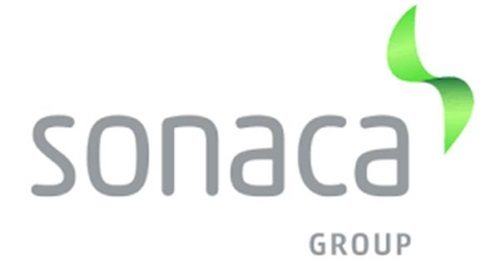Sonaca and Fives-Michelin Additive Solutions (FMAS) France are joining forces to develop, manufacture, and market 3D printed titanium components for the aerospace industry. The collaboration will enable customers to immediately benefit from the expertise of both companies in the aerospace sector and within the domain of machining and Additive Manufacturing (AM). Thanks to this new collaboration, these companies aspire to quickly develop a leadership position in Additive Manufacturing for the aerospace market.
“We are extremely happy to work with Fives Michelin Additive Solutions”, comments Bernard Delvaux, CEO of Sonaca, “Their reputation in AM and the performance of their machines, backed up by several years of industrial practical application, is a remarkable asset”.
FMAS JV CEO Bruno Bernard says: “Sonaca, which is recognised for its design and build skill is FMAS’ perfect partner for the commercial development of additive manufacturing competitive offers for the aeronautical market.”
Within the framework of this partnership, the companies plan to produce, as of 2017, certified aerospace components made from titanium; they will make use of the most recent generation of the fusion technique by laser beam, owned by FMAS. This collaboration foresees a knowledge transfer and installation of production capacities in Sonaca SA so as to best respond to customer demands. This will enable the partners to ensure a full and integrated “one-stop shop” service that will combine engineering and production, as well as certification.
I recently had the opportunity to speak to Nicolas Van Hille from Sonaca about the partnership, and exactly how 3D printing will be involved.
What components will be 3D Printed?
Nicolas: Aerospace parts, mainly titanium or hard metal (in the next 5 years, we estimate most of the aluminum parts will not be profitable), with max. size driven by maximum size of the build room (350 mm today, but will most probably increase in the next years)
How can we trust that it’s as solid as the normal components?
Nicolas: As with every aerospace part, the additively manufactured parts will have to follow strong quality assurance rules :
1) Starting with the part qualification, i.e. a long list of tests performed (mechanical properties will be verified like fatigue or tensile strength, but also micrometallurgy in order to verify the material is sane, i.e. no internal defect like cracks or porosities)
2) Once qualified, the parameters influencing the parts quality (laser power, lasing strategy, layer thickness, part orientation in the build room, powder composition, powder granulometry,…) will be reproduced as during qualification for every part that is produced.
3) Inspection tests will take place at each production batch (geometrical inspection, X-rays, tomography,…)
When will it go to mass production?
Nicolas: We have to finalize the machine adaptation to Titanium production together with Michelin and Fives. Then we will start in last quarter of this year the process parameters definition and qualification (process explained in previous question) of our first serial production application. We then expect the production itself to start second half of next year.
What are the reductions in cost?
Nicolas: It depends from one application to another. From our investigation, it can go up to 20%-30% or more. But many applications are still more expensive in 3D printing than conventional production processes. We are convinced however that machines will increase their production rates in the next years, and powder cost will drop ; therefore we expect cost savings in the future to be much more important than today, and much more parts to be cheaper in ALM (Additive Layer Manufacturing) than in conventional process.
Also, ALM gives us 2 other important benefits, extremely important for aerospace :
1) Weight saving : most of the applications we tested were 30-50% – sometimes more – lighter than the same part in conventional processes. This is because of the freedom of design ; we can design parts more or less without constraints (as opposed to machining process for instance, where we have to consider drill accessibility anywhere in the part), and therefore optimize their weight much more
2) Time-to-market reduction : after the part has been designed, we can litteraly have it on our desk a few days after, while with other processes it sometimes takes months. Due to the pressure we have to reduce our development time, this is crucial really
Will the skeleton be 100% 3D printing in the coming years?
Nicolas: Hard to say, we dream of it of course. But a lot of progress still needs to be done on the equipment for that ; built rooms need to increase significantly (probably up to 3-4 m) and production cost to decrease. Our experience with new technologies is that they sometimes cap at a given level. Future will therefore tell us if ALM is a technology that will be complementary to others, or if it will be replacing most of the metallic processes. We have to be ready for both cases anyway.
How about little planes, will we see DIY 3D printable planes in the future?
Nicolas: Not in the next 5 years I would say, the technology is still expensive, therefore only parts presenting high price / kg are profitable. I don’t think it is the case for small AC.
About the Sonaca Group
Sonaca is an international group specialised in the development, manufacture, and assembly of advanced structures for the civil, military, and space markets. There are production facilities in Europe, China, North and South America. It has no less than 2,500 employees, including 350 engineers. The Sonaca Group also provides engineering services and manufactures a light aircraft through its subsidiary Sonaca Aircraft.
About FMAS
FMAS is a joint venture between Fives SA and the Michelin Group based on their respective expertise in additive manufacturing. They will be supported by the lengthy experience in manufacture of Fives machines and the broad expertise of Michelin in the production of additive manufacturing components on an industrial scale.





